

Jump to winners | Jump to methodology
Canadian investors demand more than they did a decade ago.
They expect their wealth management teams to offer a range of skills and expertise. Investors are also more engaged with their advisors and want more frequent touchpoints to understand how current events affect what strategies their advisors are using to preserve and grow their wealth.
“Investors are demanding access to a broader array of products, alternatives in particular, and services – tax and estate planning, wealth transfer, holistic planning beyond investments,” says Dave Inglis, EY Canada partner, wealth and asset management consulting.
“There is a bit of a gap today between what clients are looking for and what their advisors are offering – and they are starting to spread their wealth over more specialist advisors to access what they need, which is a reversal of a consolidation trend we were seeing over the last 10 years or so.”
According to EY’s 2025 Global Wealth Research Report, 45 percent of clients view investment as more complicated now than before. Three worries stood out for those surveyed:
inflation
political uncertainty
volatility
The best wealth management teams are able to plug the common shortfall between clients’ demand for products and services and what their primary advisors offer.
Inglis says, “Team-based advisory models offer the advantage of allowing advisors to focus on a particular specialty, rather than being all things to all clients. They provide greater flexibility to meet with clients in a more responsive manner and collaborate on more complex client scenarios.”
Wealth Professional recognises its 5-Star Advisory Teams of 2025, who have responded to what today’s clients want by providing value and service that positions them as trusted partners, going far beyond the traditional role of basic investment advice.
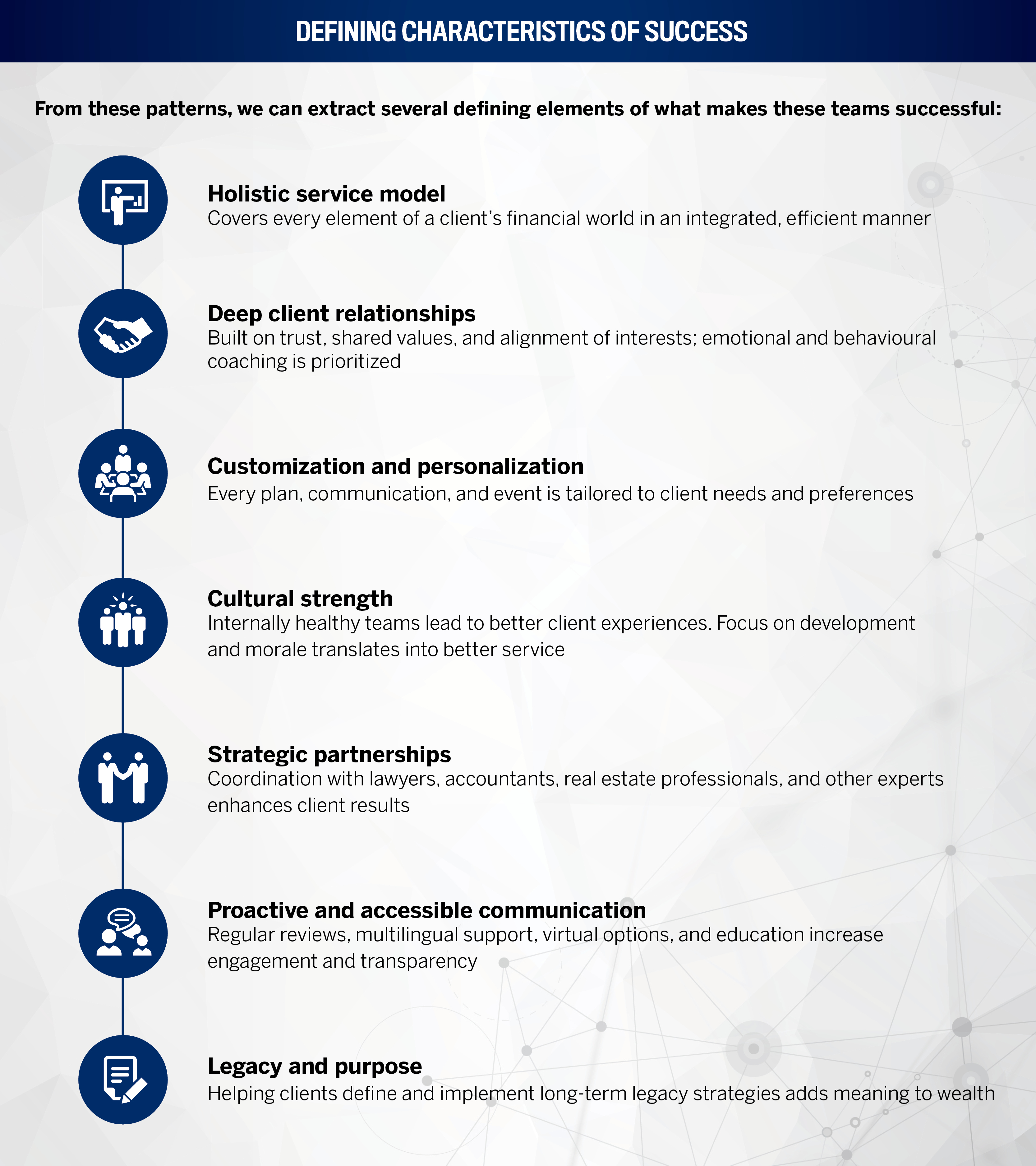
1. Holistic wealth management as the norm
Most leading teams offer comprehensive, end-to-end wealth management that integrates:
investment management
tax and estate planning
insurance and risk strategies
business succession and retirement planning
cash flow and debt management
This integrated approach ensures that every aspect of a client’s financial life is coordinated and optimized, making these firms invaluable one-stop shops.
2. Client-centric philosophy and behavioural focus
There’s a deep emphasis on:
understanding client goals, values, and life circumstances
providing personalized advice and emotional guidance (behavioural coaching) to avoid common investor pitfalls
delivering a white-glove experience from custom onboarding kits to personalized event invitations
Teams stood out for incorporating positive psychology, meaning-driven planning, and multigenerational relationship-building, enabling deeper emotional engagement and long-term trust.
3. Exceptional client service and communication
Successful teams go beyond transactional relationships:
regular proactive check-ins and structured reviews (biannual or more frequent)
use of multiple languages, virtual consultations, and tailored client experiences (e.g., virtual events with home-delivered meals)
educational initiatives like client webinars, knowledge-sharing sessions, and custom materials to improve client financial literacy
4. Team strength and culture
Elite practices invest heavily in:
employee well-being and development (training, mental health, social events)
strong internal culture, fostering collaboration and accountability
ensuring team members are not only technically skilled but also aligned with firm values and client needs
Team development initiatives show how a happy, motivated team enhances service quality.
5. Use of advanced tools and specialization
Many top teams:
offer discretionary portfolio management supported by tools like AI-enhanced models
build customized financial models and reports, often branded and easy to understand
include specialist services like cross-border wealth migration, philanthropic planning, and business structuring
This specialization positions them as experts in complex, high-value client situations, particularly among high-net-worth and ultra-HNW families.
6. Multigenerational and values-based planning
provide planning that includes children and heirs
emphasize legacy and philanthropic strategies
offer services designed for transferring values, not just assets, across generations
Strategy
With domestic elections, foreign political interference and a range of other factors, it’s been a volatile time for financial markets over the last 12 months. However, Canada’s leading advisory teams have been able to navigate this with judgment, insight, and skill.
One of WP’s 5-Star teams – CG Wealth Management’s Stenner Wealth Partners+ – has managed to remain net positive through the first half of 2025.
Senior portfolio manager Thane Stenner describes it as “one of the hardest periods of time” the team has had to face.

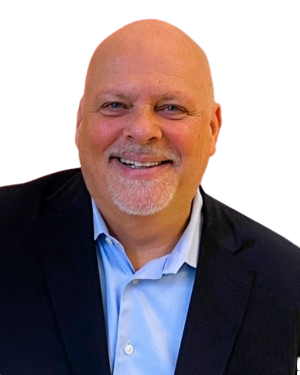
Research is fundamental to SWP+'s approach, as the team collates data from over 50 sources and its methodology led to portfolio de-risking in December 2024.
“We shifted out of a lot of the parts of the markets globally that were overvalued,” explains Stenner. “We raised cash quite significantly and also repositioned more in commodities. The good news was commodities have done really well year to date.”
Even when markets declined between February and March, SWP+ had cash, which had purposely been built up.
Stenner says, “We started buying very aggressively during that period and markets rallied in the months after. We’ve been very tactical this year and moved things around a lot in order to protect capital on the downside and try to participate somewhat on the upside.”
For senior investment advisor Dean Bradshaw, there are two ways to manage money – from a return or a risk perspective – and he favours the latter. His team at Cresco Wealth Management of Wellington-Altus Private Wealth look 12 to 14 months in advance.

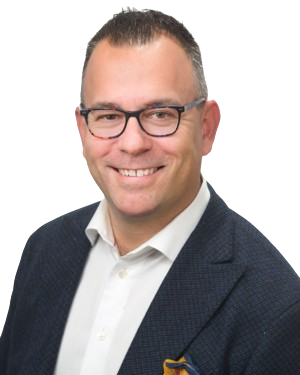
“We always anticipate volatility and always anticipate that we’re going to need income. We’re pretty much immune to any volatility,” he says.
And he’s quick to state that no matter how good the firm's customer service is, no client is going to hang around if the team is losing money consistently.
“It needs to be a strong one-two punch. In terms of the team and the services that we run, I would put us up against anybody.”
Always ensuring asset allocation is correct is a guiding principle for Shawna Perron, senior portfolio manager at Perron & Partners, Cumberland Private Wealth.
She says, “You don’t want to be chasing the market because you’ll end up getting it wrong.”

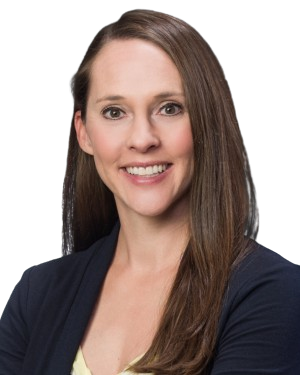
During the last year’s upheaval, the team reconfirmed its investment philosophy and strategy to ensure it was functioning as intended.
“Generally speaking, I wouldn’t say we’re speculative. I wouldn’t say we try to pick the tops or pick the bottoms. That just gets you into a lot of speculation, and speculation is usually not a great philosophy," says Perron.
Her team tweaked each client’s allocation to match personal risk and volatility tolerances.
Communication
For the best wealth management teams, it’s not enough to act simply as a stock picker, distant from their clients. The top performers speak consistently with clients, developing strong interpersonal connections that foster trust and understanding.
An extension of this approach in these uncertain times has required a great deal of communication from financial advisory teams, keeping clients up to date with their response to each consequential policy change, election, and market shift.
According to Inglis, “Firms that provide a much higher-touch model are going to do a better job attracting and retaining clients. Firms are going to have to adapt their incentive models to reflect this higher-touch approach. A ‘twice-a-year’ check-in will not be sufficient to retain their most profitable clients.”
Capitalizing on market downturns is often where advisory teams can provide the most value by building a strong, reliable portfolio at discount prices for years to come. The teams remain in close contact with their clients, gauging levels of comfort and maintaining transparency.
David Little, senior wealth advisor at 5-Star winning team Blue Oceans Private Wealth, notes that because clients can choose from a myriad of advisors, there is a heightened incentive to provide this first-class service. Little holds a town hall with clients every two months to ensure they fully grasp what is happening.

“I tell them at the very end of how grateful we are that they trust us in helping them with their affairs. The fact of the matter is, in 2025, multimillion-dollar clients can go anywhere," he says.
Going above and beyond is what’s expected at Blue Oceans.
“I’ve made sure that my staff is constantly aware that there’s nothing that our clients can ask us to do that’s too much. That’s what we’re in business for,” adds Little.
As his own investments are closely linked to those of his clients, his team empathizes with the ups and downs of markets. He shares that he would never allocate an asset in a client’s portfolio that he would not invest in himself.
While virtual video calls, phone calls, and in-person meetings are all used, newsletters are a popular way for an advisory team to explain its strategic thinking. This way, clients can remain fully briefed about macro trends and how advisory teams are navigating them.
“As soon as things get a bit shaky, we send a newsletter to all clients. We’re saying, ‘Listen, if this happens, this is what we would like to do. Are you comfortable with that?,’” explains Georges Achkar, senior investment advisor at 5-Star winner Manulife Wealth.

Achkar’s team also reached out to all clients in April 2025 as the market reacted to political upheaval.
“We have always had defensive strategy with proper diversification and asset allocation,” he says. “But we contacted our clients in April, and we have either purchased or put in fill orders at different market levels for us to be able to take advantage of the volatility.”
Cresco Wealth Management of Wellington-Altus Private Wealth produces educational podcasts and newsletters, and emphasizes the value of speaking with clients one-on-one, particularly during times of extreme volatility and uncertainty.
With 18 advisors, they have carefully chosen an advisor-to-client ratio that allows for each client to access highly personalized services.
“A lot of people will do podcasts or blanket emails, which we do, but more from an education standpoint,” says Bradshaw. “When a bigger event presents itself, we believe that one-on-one touch is really what separates us. I’ve structured our business so that we can call all of our clients in one day if we need to. We’ve had to do it before, and we’ll have to do it again.”
SWP+ has a wide scope of talents as each team member is trained to cultivate positive interactions with clients in their frequent meetings. The team works exclusively with ultra-wealthy clients who have a minimum investment allocation of $10 million, while net worths generally range from $25 million to multibillions.
To cater to the specific needs of ultra-wealthy clients, Stenner emphasizes the importance of always remaining engaged with them, having pertinent discussions that demonstrate a keen interest in their needs.
“At the end of the day, you have to build trust. And how you do that is by showing a high engagement level when you’re talking to them and asking them really good questions,” he explains. Part of this is giving clients an annual service commitment.
Stenner says, “We customize it, so we tell them in advance, ‘Let’s have a discussion around 'How often would you like to talk? What type of reports you want to have go out? How many in-person meetings? How many Zooms?’ It’s all mapped out.”
Clients are then furnished with an end-of-year scorecard generated via the team’s CRM, which lays out in detail all the forms of contact they’ve had.
“Generally, what happens is clients ask us to scale it back,” explains Stenner. “It’s not us having to hear from them say, ‘Oh, you haven’t been contacting me that much’. It’s more that we’ve been all over it and they are super appreciative, so we can dial it back a little bit.”
Typically, the team reaches out to clients anywhere from 25 to 60 times a year, and also sends out bi-weekly newsletters, along with other analysis.
“When things get really volatile, we crank up the communication level more,” adds Stenner.
Cumberland Perron & Partners deploys a range of communication styles such as in-person meetings, events, email, blogs, and social media via LinkedIn.
“On average, we’re probably chatting with all of our clients every couple of months, if not almost monthly, in some form or fashion," says Perron.
And outreach has stepped up during the disruption over the past year.
“A lot of it is data-driven,” she says. “So, instead of playing into the emotion that people are having or the emotion that the media is trying to portray, it’s more about the data, so understanding what is going on and taking clients back down to what matters most. It’s educational.”
Strong units
Cumberland Perron & Partners’ team composition is styled around “breadth and depth,” with each individual adding to the overall package. Advisors with specific interpersonal skills are given more client-facing roles, while those with analytical strengths are hands-on with portfolio allocation.
Perron says, “Our evolution is always making sure we understand what our bread and butter is, which is portfolio management, and making sure that the research that we’re doing and the strategies that we’re running are still working based on what we’re seeing in the environment.”
Spreading the load across the whole squad is something SWP+ practices. Its team of 13 manages a client base of 51, with each member working directly on each client’s file rather than operating in silos. Employees are expected to be in the office four days a week, which Stenner feels is essential for problem solving and group collaboration.
“We do a lot of technical analysis of the relative strength and momentum indicators that we look at. There’s also a formal weekly Investment Committee where we assess all the charts,” he shares. “We’re kind of contrarian, value-oriented investors. We like to try to buy things as cheap as possible, and that’s reflected in our portfolio.”
Achkar feels that the hard work and dedication of Manulife Wealth's leaders deeply influence the younger advisors on his team. He notes that there are no requirements or pressure for advisors to put in the extra hours. Rather, they work in a culture that is healthy yet competitive, ensuring the team is providing exceptional value for their clients.
“Negative energy – as much as positive energy – is contagious. We don’t tell anybody to stay late; we don’t tell anybody to do these hours. We just show them the way,” he says. “My day doesn’t end before 8 p.m., and that energy trickles down to each level. And then, I would say it circles back and becomes a positive circle.”
This culture of hard work and extra hours pays off for younger advisors on Achkar’s team. It’s not uncommon for advisors to accrue a $100-million book within three years of joining.
To maintain high expectations from his firm, Little leads by example. He wants Blue Oceans to provide highly personalized services to clients, who should feel as though their advisors are always reachable.
“I set the standard from the top down. There’s no passing the buck and that’s from constantly reinforcing through our team meetings. This is what we do, and we never lose sight of that,” he says.
Before bringing any new team members onboard, Little ensures candidates are truly aligned with his client-first philosophy, a non-negotiable for the industry veteran. By keeping this outlook deeply entrenched, the team’s turnover remains low, with many clients remaining for decades.
Little adds, “Do they understand client care? That’s the most important part. It’s not lip service – you’ve got to really want to feel it, live it, and breathe it. And they have to have the understanding that this is a service business. Every time we lose a client, it takes so much more effort to get one back.”
To improve team bonding, Bradshaw and his colleagues are closely connected, and they refer to their meeting room as “the war room”. Their team mantras emphasizing honesty, openness, and putting clients first are posted on the wall.
“We bring in mental coaches and even Olympic team coaches to better the environment,” he says.
There is also a collective charity activity where the team’s latest project aims to raise $50,000 for the community in Okotoks, AB. Alongside that are monthly lunch and learns, which range from golfing tips to financial industry training. Bradshaw even hosts two barbecues at his house every year. All of this reinforces the strong bonds that enable the team to work together more effectively.
He adds, “We don’t do perfect, so if we do fumble a little bit, it’s about us all asking, ‘What did we learn and what can we do differently?’ Our biggest focus is to be advocates of our clients, so that we force our industry to raise the bar for better experiences for all clients.”
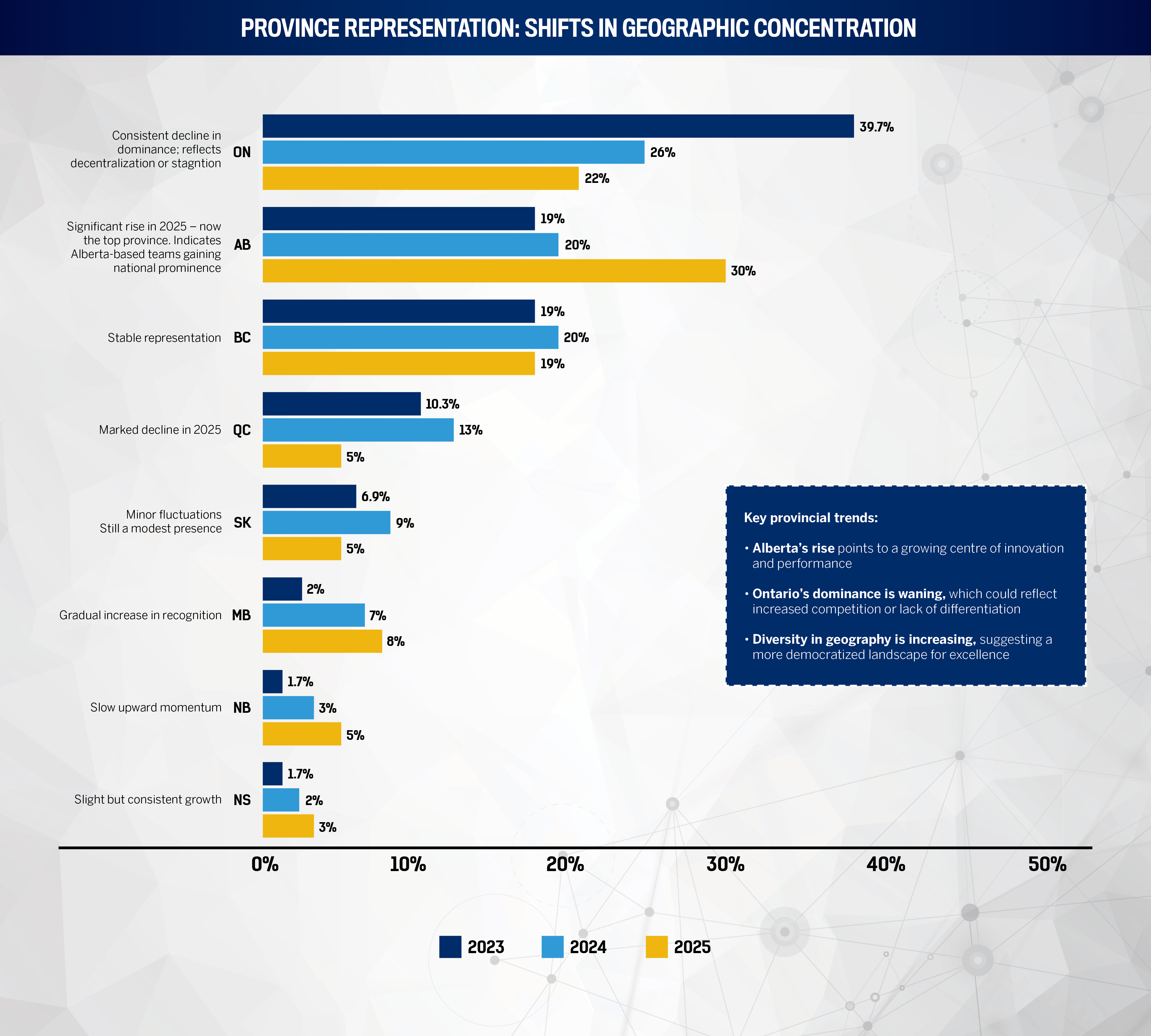

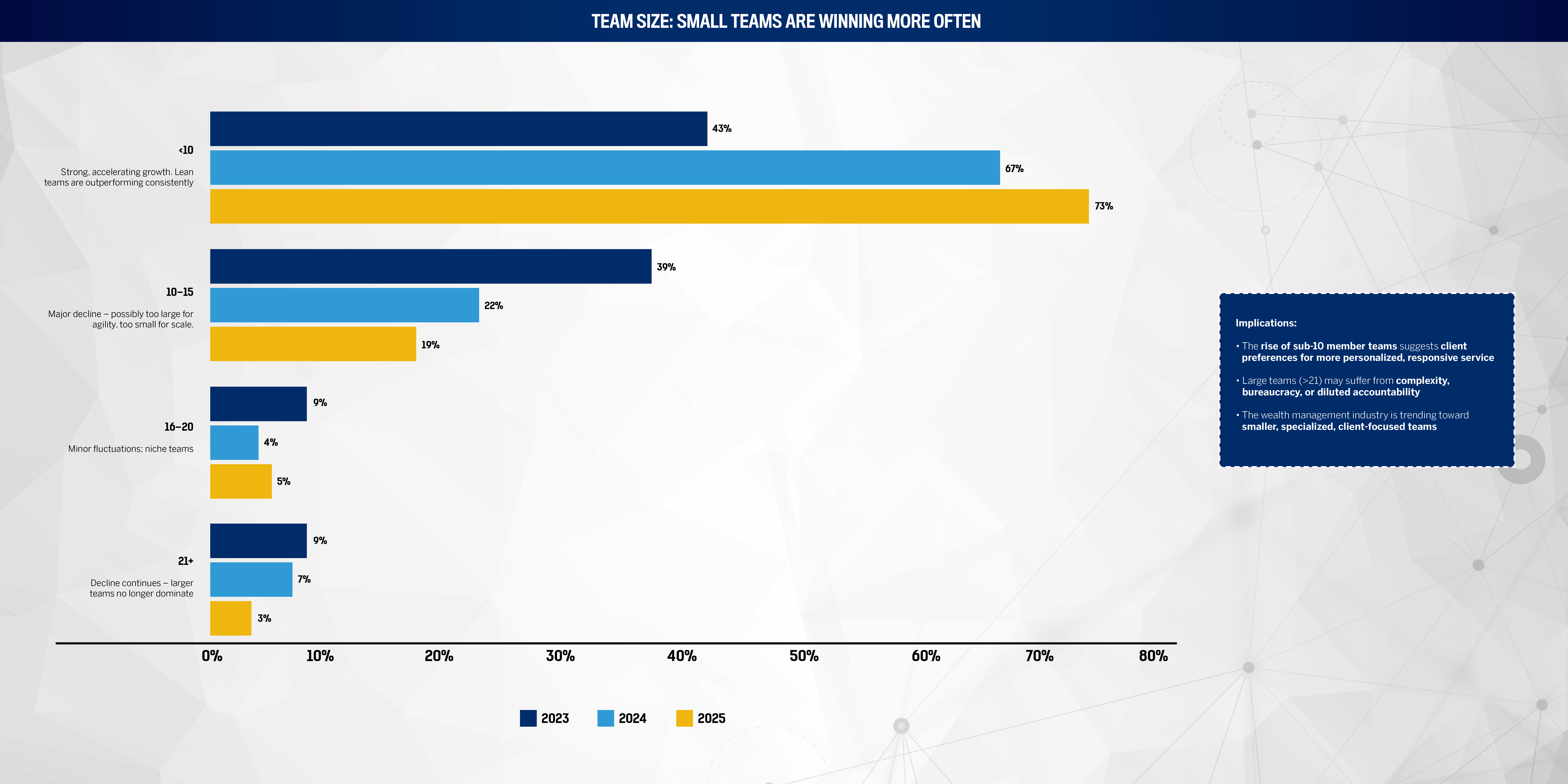
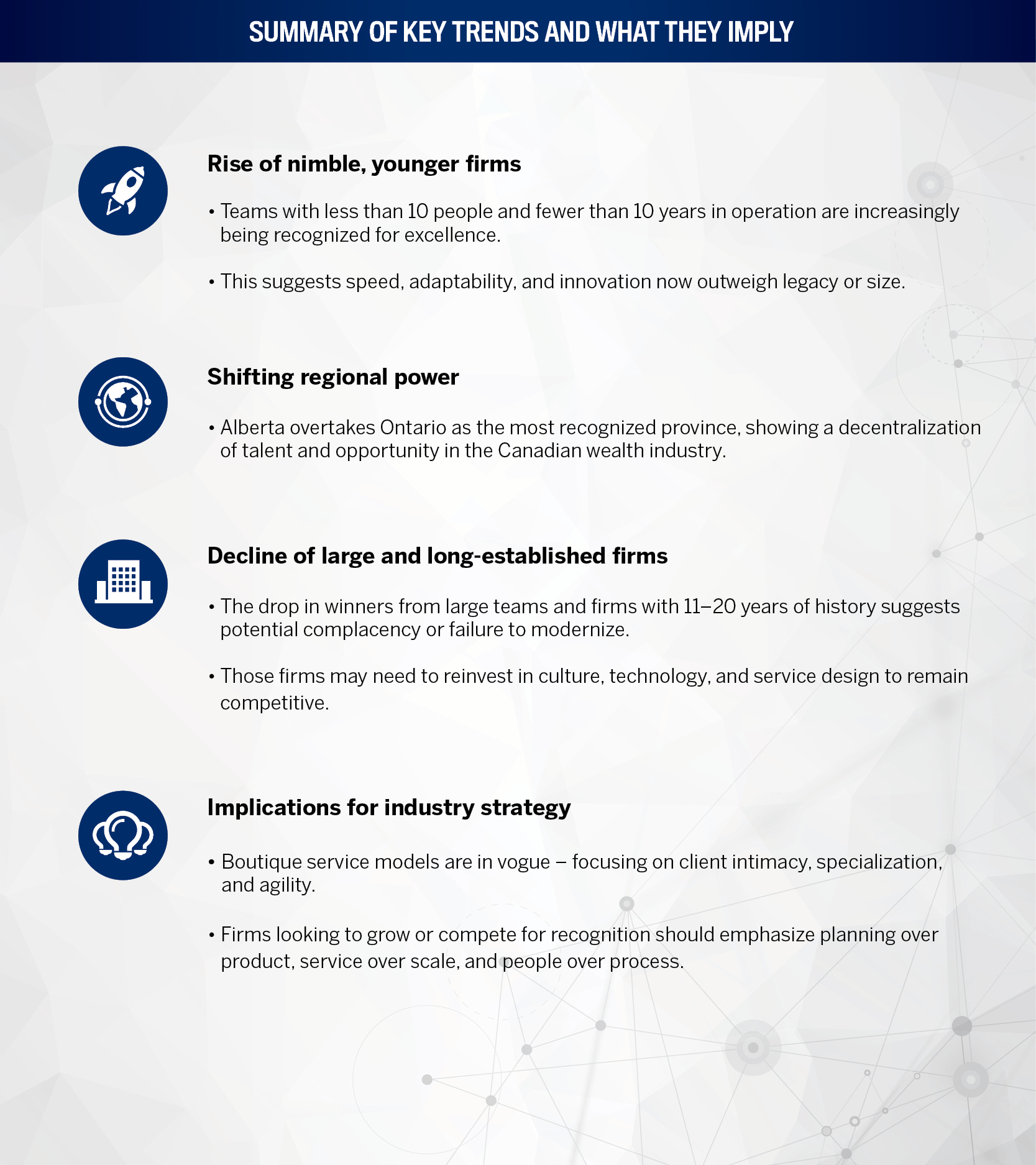
🧠 1. Deep emphasis on financial planning
Common themes:
Financial, tax, estate, and legacy planning integration
Cash flow optimization and retirement readiness
Multigenerational wealth transfer
Custom, individualized planning processes
Robust use of planning software and forecasting tools
Why they stand out:
These firms go far beyond simple investment management. They build comprehensive wealth blueprints that adapt to clients’ lives. This positions them not just as advisors, but as long-term strategic partners in financial life management.
🤝 2. Exceptional service and relationship management
Common themes:
Frequent, hands-on meetings throughout the year
Dedicated service teams (sometimes multilingual)
“Four Seasons” service model analogies
Radical transparency and upfront pro-bono planning
Long-term retention and personal connection with clients’ families
Why they stand out:
Many firms create a concierge-style experience. The dedication to communication, education, and proactive support – especially during volatile market periods – translates to loyal clients, high retention, and strong word-of-mouth reputations.
🌐 3. Innovation, technology, and thought leadership
Common themes:
Use of cutting-edge wealthtech tools and client-friendly portals
Recognition for innovative solutions
Thoughtful communication (videos, newsletters, birthday cards)
Why they stand out:
These firms are not only keeping up with technological trends – they’re pioneering them. By leveraging tools that enhance transparency, efficiency, and customization, they serve tech-savvy and next-gen clients in a way traditional firms often cannot.
🏆 4. Awards, recognition, and credibility
Common themes:
Multiple industry awards and media visibility
National and local recognition
Advisor profiles featured in speaking circuits and publications
Why they stand out:
Reputation and recognition validate client trust. These firms consistently demonstrate industry excellence, not just in performance but also in practice management, philanthropy, and innovation, lending third-party credibility to their claims.
🌍 5. Strong ethical foundations and philanthropy
Common themes:
Commitment to community service, DEI, and charity
Integration of client values into financial strategies
Large-scale charitable facilitation
Why they stand out:
Clients increasingly seek values-aligned investing and advisory relationships. Firms that demonstrate a tangible commitment to social responsibility and encourage clients to give back build deeper emotional engagement and trust.
💼 6. Investment approach with personal alignment
Common themes:
No cookie-cutter portfolios
Use of alternatives and non-traditional asset classes
Principle of “eating their own cooking” – advisors invest in the same products
Why they stand out:
Clients appreciate authentic alignment of interest, transparency, and sophisticated risk mitigation. The avoidance of mass-market models and third-party managers enables these firms to stand behind their performance and maintain agility.
To identify the 5-Star Advisory Teams of 2025, Wealth Professional asked investors across Canada to nominate their advisory teams and describe the key service offerings that set these teams apart and what value they provide to their clientele. For the purpose of this report, teams were classified as those consisting of three or more advisors.
To narrow down the list to the final 37 5-Star Advisory Teams, WP reviewed all nominations, examining how each advisory team had made a meaningful contribution to their clients and the financial services industry.